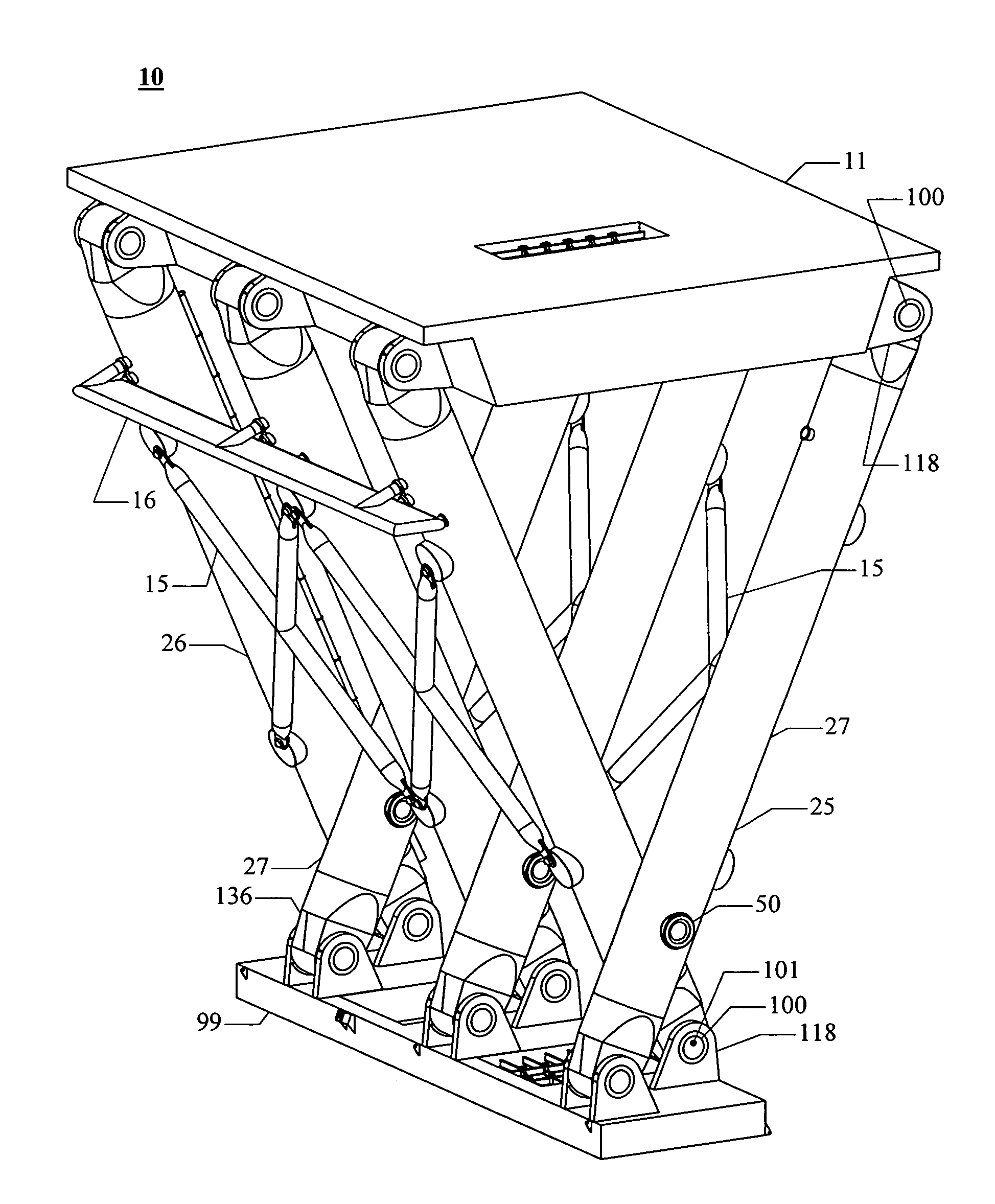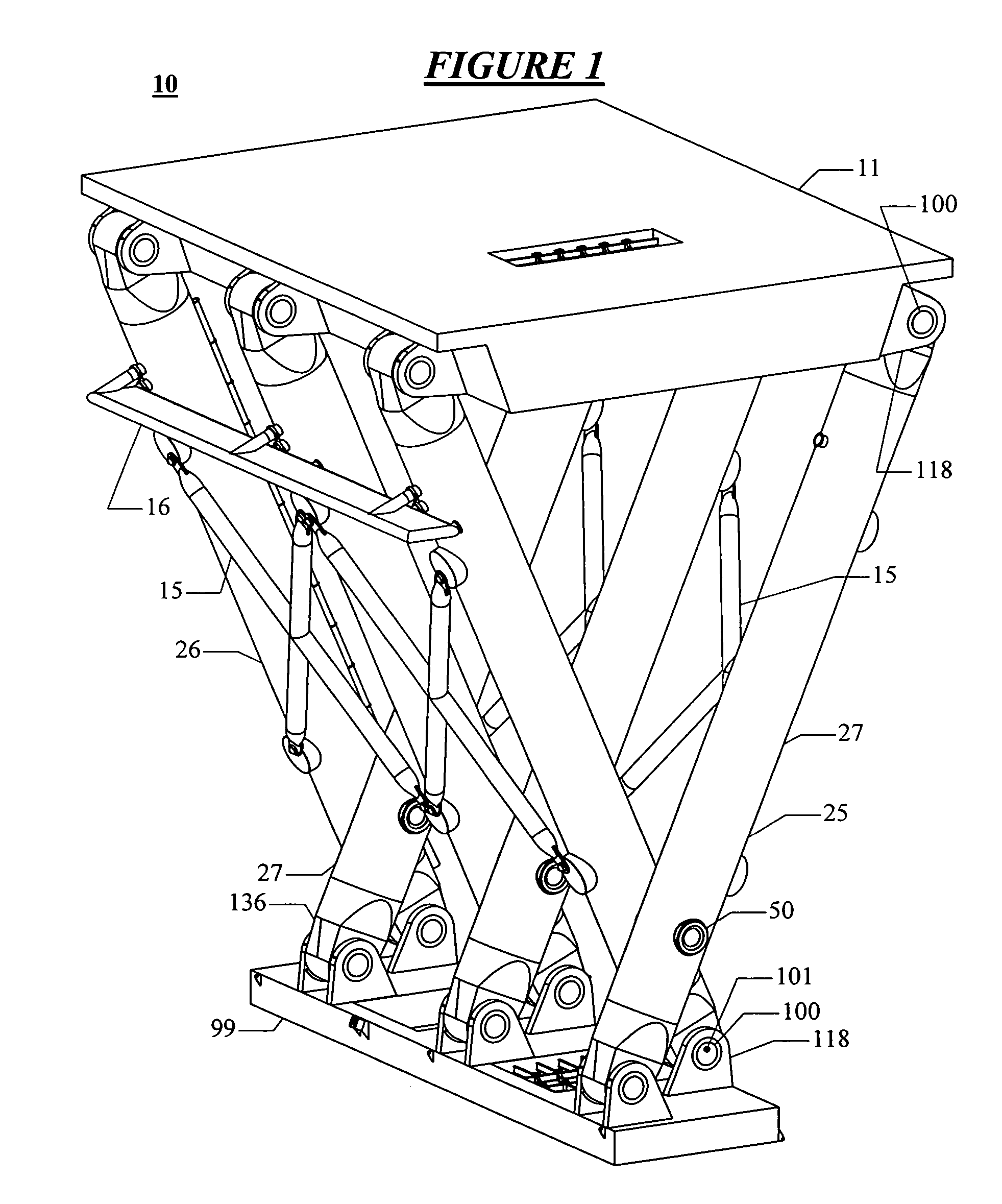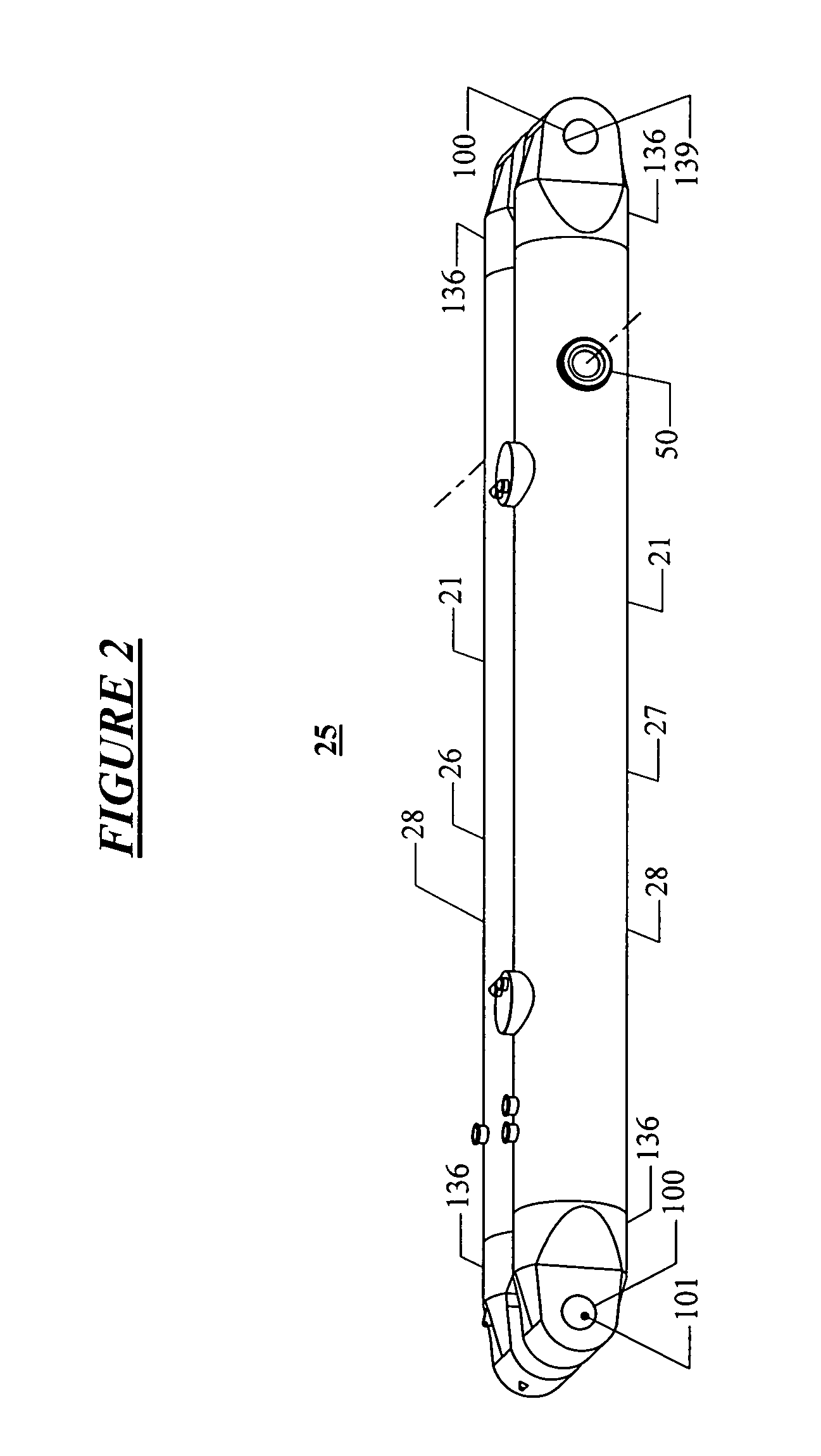Lubrication system for pin connections
a lubrication system and pin technology, applied in special-purpose vessels, sliding contact bearings, transportation and packaging, etc., can solve the problems of insufficient positive cash flow, high cost of current designs, and many fields that cannot be developed with a sufficiently large positive cash flow, and achieves simple and inexpensive effects
- Summary
- Abstract
- Description
- Claims
- Application Information
AI Technical Summary
Benefits of technology
Problems solved by technology
Method used
Image
Examples
first embodiment
Main Pin Assembly First Embodiment
The operation of the first embodiment of the main pin assembly 50 is described with reference to the FIGS. 3, 4, and 5. The main pin assembly 50 has to operate under two separate conditions. The first operational condition for the main pin is when the legs 26 and 27 are being rotated relative to each other about the axis of the main pin assembly 50. One or both legs 26 and 27 will move relative to the main pin 51 when such a rotation occurs. While the buoyancy of the second leg 27 is adjusted during its assembly operation offshore so that it is approximately neutrally buoyant and produces very little net load on its connection to the main pin assembly 50, pin loadings from waves and variations in buoyancy during leg rotation will be present. In order to avoid galling under load of the mating bearing surfaces 61 and 63 of the pin and 30 of the legs 26 and 27, lubricant is injected into the interfaces between these mating bearing surfaces using the ma...
second embodiment
of Leg End with Face Seals
The lubricant supply system 600 for the second embodiment of the leg end 236 is very similar to system 400 for the first leg end 136 and the first embodiment of the pin 101. The only basic difference is the provision of a separate branch 608 from the circuit used to supply the interior end of the pin. Refer to FIGS. 15 to 19 and 23 for the operational description. This separate branch 608 has a selectably operable on / off control valve 609 which is normally closed with the pin assembly 100 retracted into its pin housing bore 139 of the leg end 236. Similarly, the on / off valve 426 is closed to block the crossover line 425 between the pump delivery lines 404.
In order to initiate movement of the pin for the first dynamic phase of the pin operation, the annular inflatable seal 104 of the leg end 236 is first slightly relaxed so that it will wipe less lubricant from the prelubricated outer end of the pin 101 as the pin is extended by the hydraulic cylinder 260. A...
PUM
 Login to View More
Login to View More Abstract
Description
Claims
Application Information
 Login to View More
Login to View More - R&D
- Intellectual Property
- Life Sciences
- Materials
- Tech Scout
- Unparalleled Data Quality
- Higher Quality Content
- 60% Fewer Hallucinations
Browse by: Latest US Patents, China's latest patents, Technical Efficacy Thesaurus, Application Domain, Technology Topic, Popular Technical Reports.
© 2025 PatSnap. All rights reserved.Legal|Privacy policy|Modern Slavery Act Transparency Statement|Sitemap|About US| Contact US: help@patsnap.com



